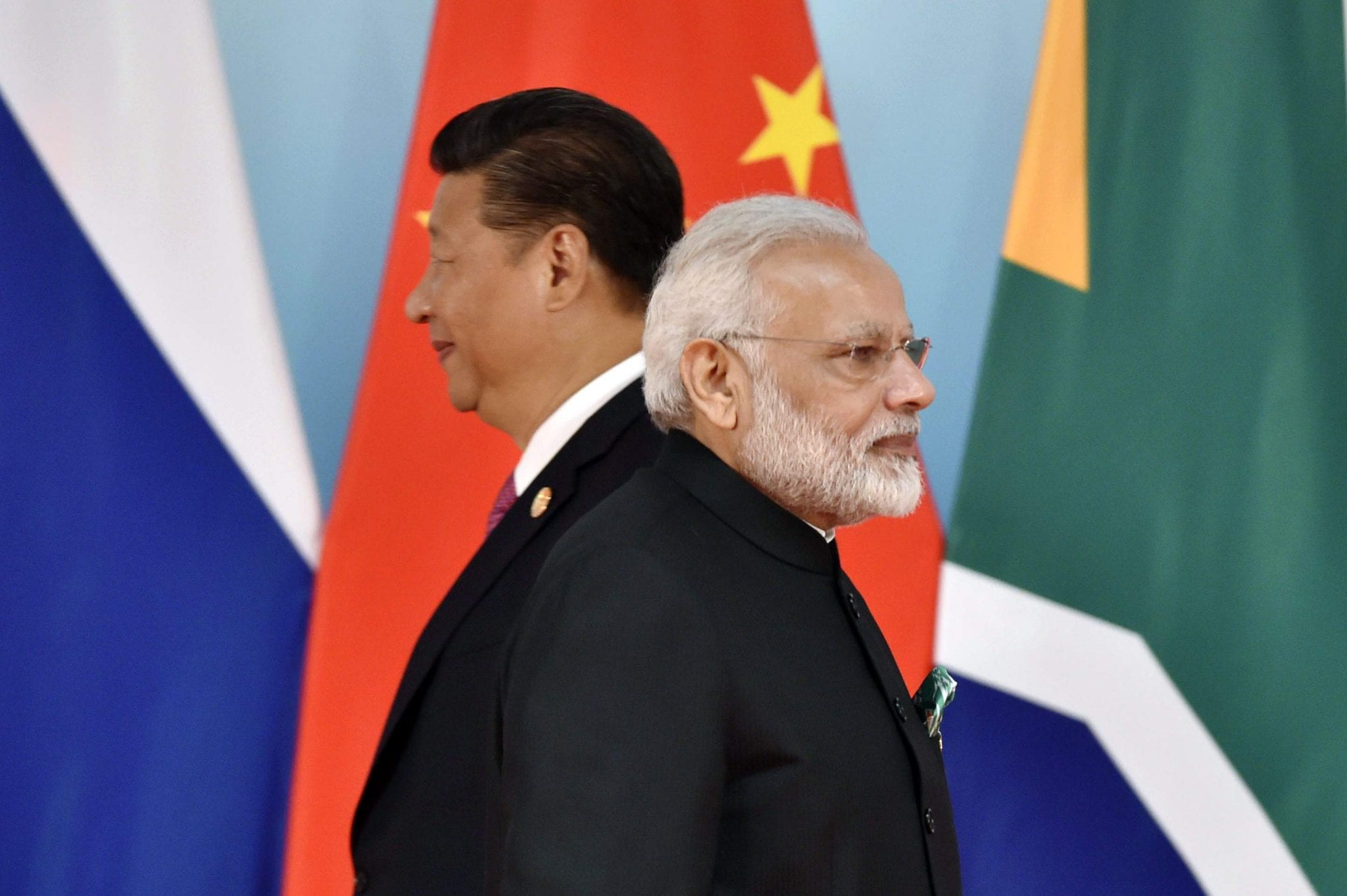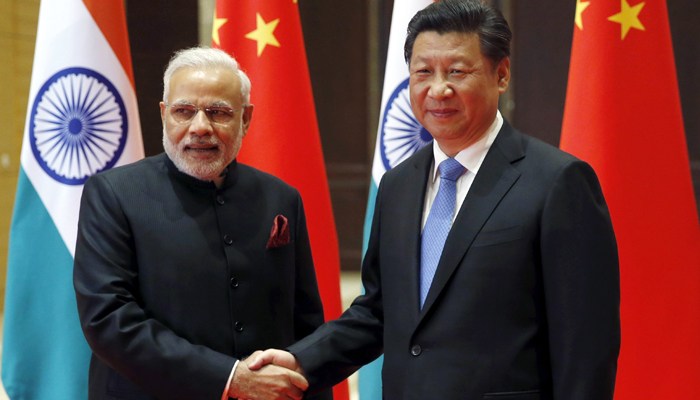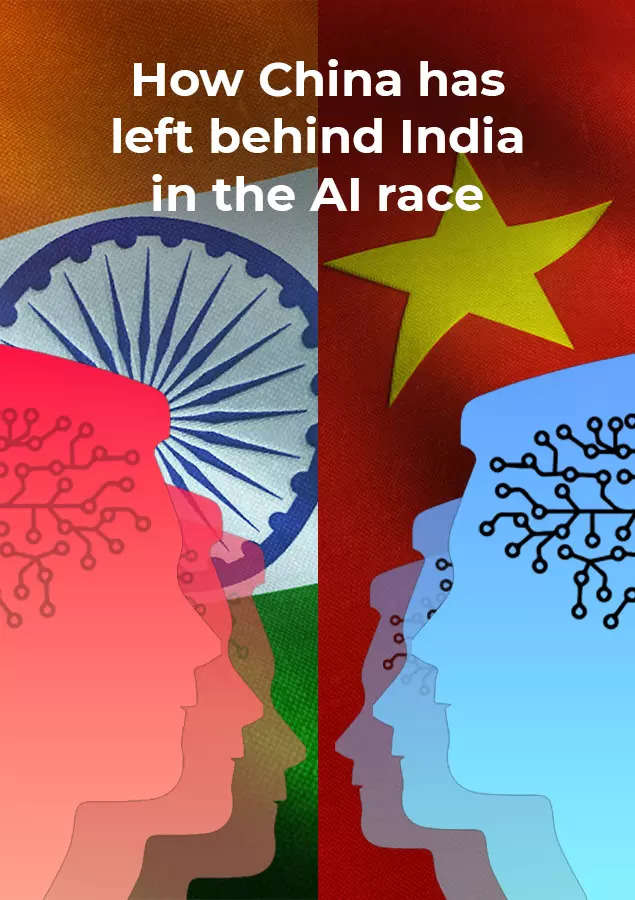AI is on the rise in China, but India is still 15 years behind

AI is on the rise in China, but India is still 15 years behind
‘Information and intelligence’ warfare needs to be analyzed and bridged by China.
Pravin Sawhney, the editor of FORCE magazine, disquietingly anticipates a grim scenario in his new book The Last War: How AI Will Shape India’s Final Showdown With China: “India would lose a war against China within 10 days if they fight soon.” Arunachal Pradesh and Ladakh can be taken by China with little loss of life by India.” Is this a mere fantasy of a defense analyst? Other analysts have predicted similar scenarios as well.
In 2020, a US military blog, Mad Scientist, which examines the future of warfare, visualized an India-China conflict in Jammu and Kashmir and Ladakh in 2035, where China works in collusion with Pakistan to defeat India. The Indian Army was ill-prepared for China’s high-tech attack during the early stages of the crisis in Eastern Ladakh.
As with any doomsday prediction, the Indian military must reform itself quickly. Pravin’s timelines are the only thing I disagree with. The People’s Liberation Army (PLA) as it has been envisaged by him will manifest in ten years, and we will not have full-spectrum AI-driven war capabilities for another ten years.
In any case, we must conduct an ethical assessment of our capabilities, and undertake reforms to close the skill gap between China and our own.

China’s ‘information and intelligence’ warfare
Based on empirical evidence, military technology, force structure, and doctrine undergo radical changes every 50 years. Airland battles (PGMs), cyber, electronic, and space warfare, as well as advanced versions of weapon platforms, were the next cycle the US demonstrated after World War II. By incorporating PGMs and electronic warfare into the battle space, the tactical battle, dominated by close combat, became a ‘walk in/walk over. Currently, advanced versions of this warfare are popular. AI is poised to dominate the next cycle of warfare soon. In a decade, we will see the early manifestations of this technology, which will fully mature by 2040-50.
In the years following World War II, China’s military was slightly refined. Within 20 years, it developed a warfare cycle almost equal to that of the US and is now moving rapidly toward AI-driven warfare. In Mandarin, “Information” and “intelligence” mean more than pinglish words. In China, the Central Military Commission (CMC) releases its national security strategy as ‘Military Strategic Guidelines’, which are classified. Publicly available Defense White Papers, however, usually provide some details. “Winning local wars under information” was the defense white paper’s title for the 2004 publication. This strategic concept has also been renamed “Winning local wars under information” in the 2015 publication.
The traditional (land, air, and sea) domains have been extended with three new domains – cyber, electromagnetic, and space. Dominating information meant denying the enemy the ability to control, command, and use weapons and exploiting it yourself. Through this, the adversary’s command and control and weapon systems – which rely on communications through satellites, electromagnetics, and cyberspace – are rendered ineffective, allowing its military to use the same without restrictions.
As a result of the new technological and industrial revolution, the term “intelligentsia warfare” was coined in China’s 2019 White Paper: “With the advent of artificial intelligence (AI), quantum information, big data, cloud computing, and the Internet of Things, military applications of cutting-edge technologies are on the rise. There are historic changes taking place in international military competition. IT-based military technologies are rapidly advancing. Weaponry and equipment that are long-range, intelligent, stealthy, and unmanned are on the rise. Information warfare is evolving into intelligent warfare.”
An intelligent war focuses on incorporating artificial intelligence into every aspect of military activity, such as intelligent weapons and platforms, bots, autonomous weapons systems, and robotic soldiers, using technologies like intelligent networks, cloud computing, big data, and the Internet of Things to support them. Intelligence implies that military machines will be self-aware in their application.
There are now seven domains in which China is going to fight its information and intelligence war, namely air, land, sea, outer space, cyber, electromagnetic spectrum, and near space or hypersonic (between 20 and 100 kilometers, which is the boundary between near space and outer space).
Information and intelligent warfare is well underway in China. With the help of President Xi Jinping, the military reforms have gained greater momentum, ensuring that the nation can reach “great power status by 2049” according to President Xi Jinping’s ‘China Dream. The reforms he announced in 2015 shaped the PLA’s transformation. Five tri-Service theatre commands were formed from seven military regions. Additionally, the PLA created three new services – the PLA Ground Force, the PLA Rocket Force, and the PLA Strategic Support Force.
In addition to electronic, cyber, and psychological warfare, strategic deception, and communications and electronic aspects of space warfare, the Strategic Support Force includes sub-domains of electronic, cyber, and psychological warfare. There are more surface-to-surface missiles in the PLA’s Rocket Force than anywhere else in the world. As a result, enemies’ command and control headquarters, aircraft on the ground, fuel depots, ammunition depots, and bridges and roads are destroyed. It is frightening to see the quality and vast inventory of Chinese missiles, which are used by all modern armies, including India’s.
With rapid progress, military reform timelines have been compressed. By 2020, important information would be achieved through mechanization. By 2027 (the 100th anniversary of PLA), mechanization, information, and intelligence will be integrated. By 2035, the national defense system will be fully modernized. By 2049 (100 years of the People’s Republic of China), the PLA will become a world-class force.

Reforms in the military, politics, and time are needed in India
Today, Indian military reforms began in the mid-1980s and were completed in the mid-2000s have enabled the Indian military to fight a poor man’s version of the Gulf War’s Airland Battle. At this point, our capabilities were comparable to those of China. There has been no progress in reform since then. To fight the high technology wars of the 21st century, we need to develop a capability development strategy based on a formal strategic review and national security strategy.
The military capability of our country is only a decade behind China, but only on the ground, in the air, and on the water. We are nearly 15 years behind in cyber, electromagnetic, space, and near space technologies. What else could explain the surprise in Eastern Ladakh? Our government is touting the most fundamental of innovations as military exploitation of artificial intelligence. China has already set ambitious goals for full-spectrum military exploitation of artificial intelligence by 2027 and 2035.
The current situation resembles that of 1959 to 1962. There was a threat of war. With no border infrastructure to sustain our military, we were unable to stalemate China. While we have reasonable border infrastructure today, we have been far behind when it comes to cyber, electromagnetic, and space domains that are to determine the outcome of future wars in conjunction with artificial intelligence. Chinese preparations for the upcoming war are the same as ours for the last one.

To stalemate – if not win – against China, India needs to bite the bullet and use diplomacy.
Two-front wars need to be abandoned. The Central Reserve Police Force must take over counterinsurgency operations. It must be a ‘worldwide’ approach. Invest in our defense budget by imposing a defenceless that is equivalent to China’s. The military reform process must be politically owned and supervised. A caveat should be placed on our relationship with our allies if high-end military technology is transferred. India will bear the brunt of China’s aggression in the Himalayas, but US military prowess will deter Chinese aggression in the Indo-Pacific.
We can stalemate China in ten years, as long as we have the political and military will. In 2014, Ukraine implemented military reforms to stalemate Russia in 2022.
edited and proofread by nikita sharma




